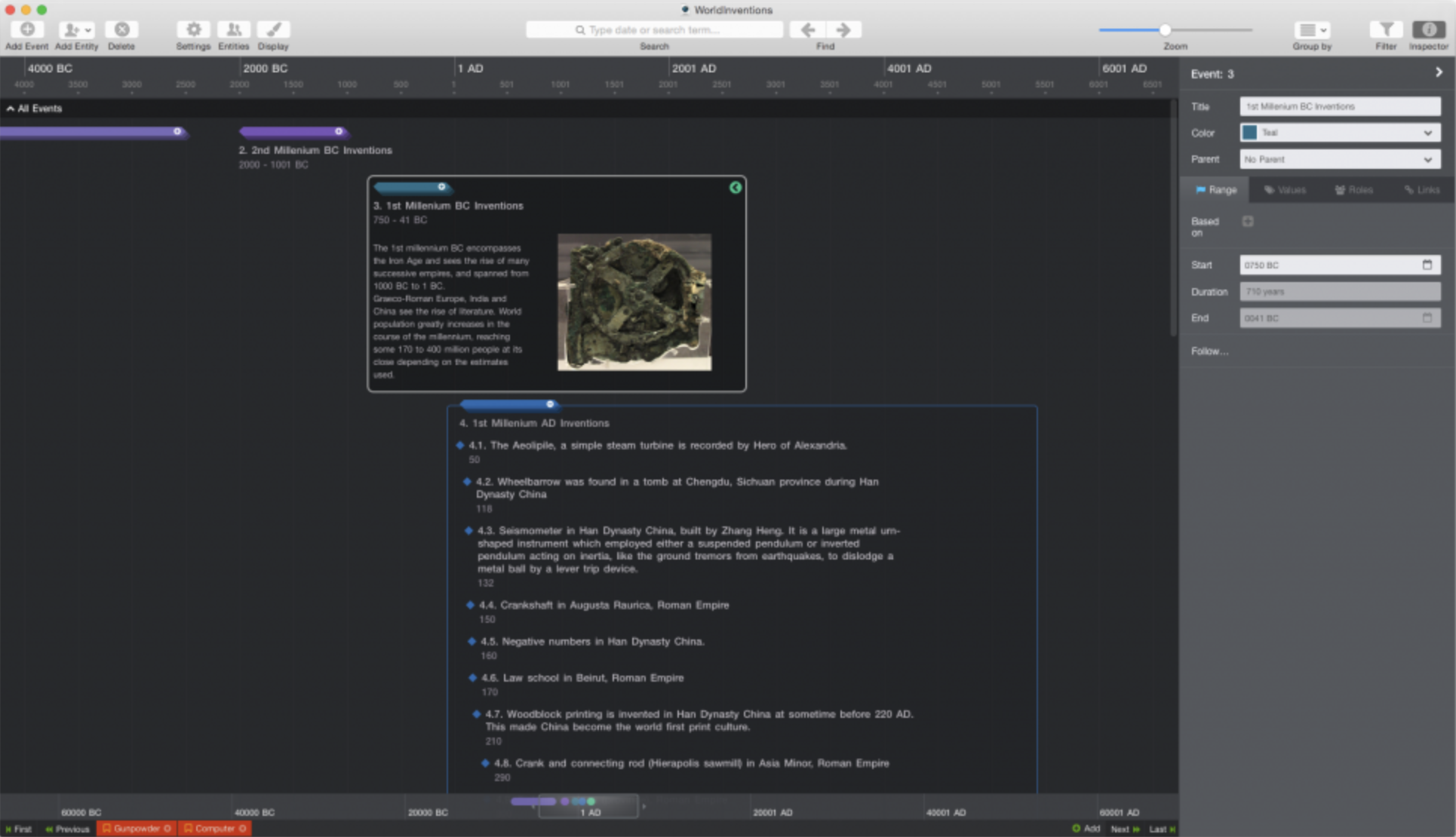

- #Aeon timeline free trial for free
- #Aeon timeline free trial how to
- #Aeon timeline free trial software
#Aeon timeline free trial how to
The main window of the application presents you with the 'Standard Calendar' options that you can use in displaying your timeline, namely 'BC – AD', 'BCE – CE', 'Year Only', 'Floating Weeks', 'Floating Days' or 'Zero Hour', depending on your needs, as they characterize the way in which you view dates.Īt the same time, the tool's start screen allows you to create 'Custom Calendars', view 'Example Timelines' in order to better imagine how to design your own or open a 'Recent Timeline'.
#Aeon timeline free trial software
This article has provided a broad overview – just the tip of the iceberg, of the many features and ways to use Aeon Timeline.Aeon Timeline is a comprehensive and efficient piece of software that was designed for a variety of purposes, aiming mainly to assist you in creating detailed accounts of your projects or life events, while also allowing you to edit the contents whenever you need with the utmost ease.
#Aeon timeline free trial for free
It is the type of software best understood by doing and y ou can trial it for free for a limited time. The Aeon Timeline website is also full of very helpful resources and ‘how to’ guides. I continually go back to my TRIAL project to try out various concepts when the need arises rather than trying to learn how to use all the features of this software prior to starting a project. Use your TRIAL project to figure out how to use features of the software where you don’t feel confident before applying these features to your real work. If you wish to sync with Scrivener, then set up a TRIAL project in Scrivener too. I would encourage setting up a TRIAL project to play with and try out ways to manipulate what you see on the screen. Needless to say, a large screen is very useful for this software!įor those who love exploring tech, you can easily go down the rabbit-hole experimenting with Aeon Timeline. There is a filtering option too, if you wanted to view scenes with select characters. I haven’t explored the Mindmap feature yet. The screen can be split into a number of displays, enabling simultaneous viewing of Timeline, Spreadsheet, Narrative, Subway and Mindmap views. See the split screen example below:Īnother really useful feature is the Subway View where you can see which characters are involved in a particular event in sequence: One game-changing feature of this software is the ability to display events in chronological order (Spreadsheet View) then take those events and display them in narrative order (Narrative View), without changing the chronological order. The possibilities are infinite.Īnother handy view is the Relationship View where characters, locations, story arcs etc can be displayed against events. If you were writing Historical Fiction for example, you could plot the events of history on the timeline and weave your fictional story around the events. Here’s the same view, configured with a darker background and ‘Inspector’ field – similar to the Inspector in Scrivener: Character avatars for each Event are shown in red with Locations displayed in white against a black background. Here’s an example of what a story looks like in Timeline View with each Event displayed at the time it took place. Speaking of Scrivener, Aeon syncs with Scrivener too. It’s similar to Scrivener in that way and also in its flexibility. It can be used quite simply or scaled up to various levels of complexity. Aeon Timeline is a powerful bit of software that helps those who like to visualise their story outline on the screen.


 0 kommentar(er)
0 kommentar(er)
